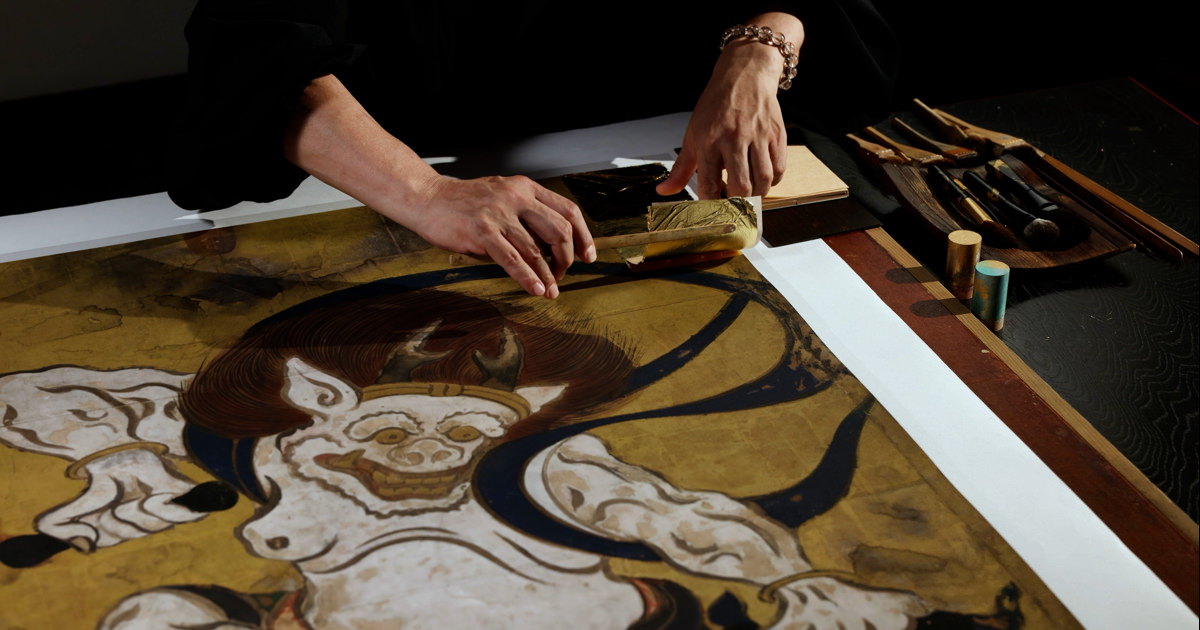Minneapolis Institute of Arts, The William Hood Dunwoody Fund and Gift of funds from Louis W. Hill, Jr. 81.1.1-16
These images are based on the high resolution facsimile produced by the Tsuzuri Project. Unauthorized copying, duplication, or transfer of these images is strictly prohibited.
Scene of Rice Cultivation
High-resolution facsimiles
- Material
- printed, gold paint on washi paper
- Period of creation
- Tsuzuri Project Stage 7 2013–2014
- Recipient
- Daikakuji Temple at the former Saga Imperial Palace
Original
- Artist
- Attributed to Kano Sanraku
- Historical era
- Edo (17th century)
- Material
- ink, color, and gold paint on washi paper
- Medium
- Sixteen sliding doors
- Size
-
Spring : H78.0 × W86.0 cm
Summer : H78.0 × W84.0 cm
Autumn and winter : H177.0 × W92.0 cm
(Dimensions refer to individual screens.) - Collection
- Minneapolis Institute of Arts
Description
Various paintings generically entitled "scenes of farming" depict rice cultivation over the four seasons, from planting and irrigation to harvesting and tilling. It is believed that this motif was developed as a means of depicting for the Chinese emperor how farmers tended their fields. Under Confucianism, agriculture was considered the basis of an orderly society; therefore, after this motif made its way to Japan in the Muromachi period, the ruling class ordered many paintings in this motif. This work is believed to have been first displayed in the Take-no-ma (bamboo room) of Shoshinden of Daikakuji Temple in Kyoto. According to documentation accompanying this piece, the temple consigned the painting of the sliding doors to the painter Ooka Shunboku in 1755. This work is now in the possession of the Minneapolis Institute of Arts. Despite bearing no signature or seal, it has been attributed to Kano Sanraku — who bequeathed this and a number of other works to Daikakuji Temple — because the composition, brushstrokes, and depiction of rocks and trees are characteristic of the Kano school of painting.
*In order to view videos, it is necessary to consent to the use of cookies by our website.
If the videos are not displayed, please click the “Cookie Settings” and accept cookies.




